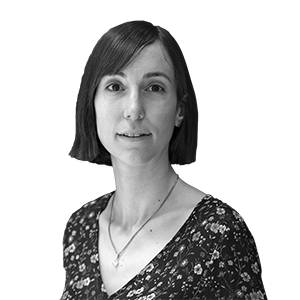Andersen's 'All the Fairy Tales' in Catalan: No sugar coating or amputations
Adesiara publishes the 160 stories translated from Danish and with the original illustrations


BarcelonaThere are books that mark a before and after in the history of literature. All the stories, by Hans Christian Andersen (Odense, 1805-Rolighed, 1875), is one of them. A decade ago, the publishing house Adesiara—led by Jordi Raventós—undertook the adventure of translating all of the writer's stories, published monthly between 1835 and 1872, from Danish into Catalan. The undertaking was monumental: translating 160 stories by Pedersen and Lorenz Frølich into our language. Translators Henrik Brockdorff and Miquel-Àngel Sánchez y Fèrriz took on the challenge and, over the course of eight years, have undertaken the complex but rewarding task of bringing the original stories of tales such as The Ugly Duckling, The Little Mermaid, The Princess and the Pea and The little tin soldier.
"He's a writer everyone knows, but not everyone has read him. We decided to publish him because, if we're a normal country, we should have Andersen properly in Catalan," says Jordi Raventós. When they delve into the stories, readers will encounter an Andersen who perhaps doesn't quite fit with their childhood memories. "There's still an active operation to amputate the darkness of fairy tales so as not to darken the minds of young readers. It has happened and continues to happen in many of the adaptations of Andersen's work," writes ARA journalist and writer Jordi Nopca in the book's epilogue. Reading the original stories means discovering the most popular tales "without amputations and without sugarcoating," adds Raventós, and provides the writer with a deeper, but also luminous, dimension of the human soul.
A fairy tale writer
Andersen began publishing the stories in the literary magazine Kjøbenhavns Flyvende Post, where he was born and raised as a fairy tale writer. "Unlike the Brothers Grimm, he doesn't take traditional tales to preserve them, but rather appropriates some mythological figures to serve each story," the editor notes. "Some tales are tragic, others are tear-jerkers, some are harsh and gruesome. He was modern in the sense that he incorporated gratuitous violence, like the thrillers of now, and which had a very cinematic rhythm. The descriptions of the scenes are of a high literary quality," highlights translator Miquel-Àngel Sànchez i Fèrriz.
The complete corpus with all the stories also allows us to capture the influence that medieval literature had on his work. "The character of Otger, the present of some stories, who accompanied Carlem. There are also episodes from the history of Denmark that we have contextualized in the notes at the end of the volume, thinking of the current Catalan reader," emphasizes Raventós. to the" and "with an excess of adventures," as Nopca recalls in the epilogue. The great reception among readers around the world for generations and generations has shown that those initial opinions were completely misguided. In the 21st century, with a part of contemporary children's and young adult literature that champions politically correct storiesWhat place can Andersen's tales occupy among children? Raventós is blunt: "This will not depend on the children, but on the parents." Adesiara's book is aimed at readers eager for risk and adventure, both young and old.
